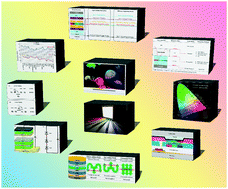Evolution of white organic light-emitting devices: from academic research to lighting and display applications
Abstract
Recently, Apple Inc. launched the highly anticipated cellphone, the iPhone X, which adopts an active-matrix organic light-emitting display (AMOLED) for the first time. Since then, AMOLEDs have been in the focus of the display industry and a lot of new production lines have been set up. Apart from smart phone displays, AMOLED TVs are also extremely popular in the consumer market. LG's next-generation OLED TVs have been ranked as the Best of CES for many years, which are based on white organic light-emitting device (WOLED) technology. Nevertheless, it took almost 30 years of tremendous research efforts to develop this technology from a simple experimental sample to such excellent products. In this article, a detailed discussion is presented on the evolution of WOLEDs from academic research to industrial applications. More specifically, parameters to evaluate the device performance and approaches to enhance the device efficiency as well as different device architectures adopted in WOLEDs are reviewed. Lastly, special focus is laid on the applications of WOLEDs in lighting and displays.

- This article is part of the themed collection: 2019 Materials Chemistry Frontiers Review-type Articles


 Please wait while we load your content...
Please wait while we load your content...